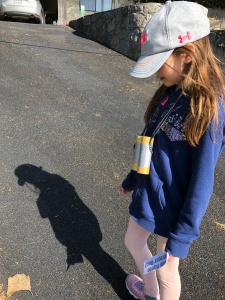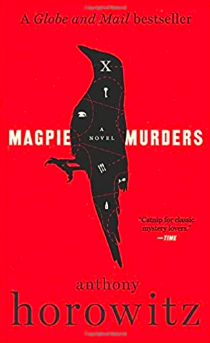Excuse me while I put in the free headphones I got with my old iPhone to drown out the music from The Descendants (made for TV movie, according to the soundtrack listing) for the bazillionth time this week. Surprisingly, it’s working and I can find some moments of peace to write about the past few weeks at home.
It’s been awhile. The last time I wrote was over 20 days ago! I know we are all in disbelief. So what’s changed? What has hindered my creativity and access to time, you ask?! Well of course you know the answer to that, but I’ll put my personal twist on it to (hopefully) entertain you and maybe make you feel a little less alone in all of this.
I’ll start with my husband most likely having a mild case of Covid-19, which was full of uncertain moments, anxiety, and acquiescing to his needs (mostly coffee). It started with what seemed like a stomach bug, but then digressed into a mild fever, headaches, chills, and general aches with much exhaustion. When this was all happening, the CDC had not yet added these symptoms to their Covid-19 list, and the testing was not nearly as available in BC as it is now.
“It could very well be another virus, there’s lots going around,” the nurse on the phone said, our doctor said, his (former-GP and generally very intelligent) mother said.
Despite this, and under the direction of these health professionals, we took the necessary quarantine precautions for about 11 days (the first 3 days it was shrugged off as a stomach ache and exhaustion from the stress of it all), and even when he came back into the fold, it was only for brief periods and at a distance. 20 days later, he’s still avoiding many hugs and getting no kisses (poor guy!), and has moments of exhaustion as the virus lingers in his system. He hasn’t left the house except for a brief walk with the family and an outing to a local beach. So we are being safe. And the rest of us are healthy, thank goodness. And I am so grateful his case was mild and didn’t devolve into hospital time or respiratory issues.
I felt like a pariah in that time though, fearful of telling other people, worried they might judge us or avoid even dropping anything off at the house. I realize this is ridiculous, but when you are the only one in your close community whose household has been affected by the pandemic, you do feel like a bit of an outlier. I considered painting a red “X” on the door at one point (not really, but can you imagine?! Also, did you hear the story of the person who dressed as a completely terrifying plague doctor in the U.K. and walked around a suburban neighbourhood? Why?!).
At the time, we weren’t even sure if he had Covid-19, and probably won’t ever know for certain (if you want to know about the difficulties of testing, send me a PM and I’ll tell you why he isn’t getting the test). It still feels unreal.
Still, I managed the solo responsibilities relatively well, with only a few minor breakdowns and tears (on my part – the kids are crying all the time!). Someone once told me I couldn’t really handle anything, but I can confidently say that I can definitely handle A LOT. Working part-time from home in a completely new situation, while taking care of the kids full-time and a husband in quarantine, getting everyone fed and feeling loved – I did it!
We are now a week into things returning to our family’s “normal”. Except for the new school schedule for our 7-year-old (they now meet on MS Teams every day! At 9 a.m.! Which worked out really well for my staff meeting also starting at 9 a.m. on Tuesday, and of course, technical difficulties). Last week’s schedule is no longer valid, but I keep hearing that having regimented schedules aren’t good for kids anyways, so yay! Except for now the weather has turned into a typical Vancouver spring: chilly and cloudy and rainy, so convincing them to go for walks is more of a non-starter. Except for now my creativity is sapped and I have less energy to keep the kids entertained. Except my 4-year-old has ramped up the meltdowns and the screaming.
It was 8:15 p.m., past her bedtime, but not too far past. I should have been more careful given her early wake-up that day. She was painting a very detailed colouring page I had printed from the Internet (anyone else doing that? It’s a great strategy to keep them busy! But maybe not right before bedtime…lesson learned), and had made a small mistake. The unicorn had blue on it’s face, which according to her is a “boy colour” and she just couldn’t get past the fact that she had painted outside the lines. She was inconsolable and allowed herself to be rocked in my arms, sobbing. For the first time in about six months, she mentioned her milk bottle: “I wish I was three so I could have my bottle!” she shouted through tears.
I kept apologizing and telling her I loved her, holding her, and trying to calm her. I offered to help her the next day. “But I know how to do it! I can do it by myself!” She was caught between yearning for a more innocent time and being independent. My heart almost broke in two when she finally calmed down and pointed out a kit her older sister owns. It’s from Scholastic, which we order through her school. “Well, we can get you the same one when you’re in kindergarten,” I promised her. Her face crumpled into the saddest little face I’ve ever seen and she started bawling again. “I don’t know why I’m crying! I didn’t know it was going to come up!” she said to me. I rocked her tighter and it was all I could do to stop myself from crying too. She was finally consoled and we slept most of the night together (I *may* have snuck into her room at one point and lifted her out of bed into mine; she rested her head on my pillow with a huge smile and my job was done).
I know this is likely her way of dealing with things, even though she barely mentions daycare or other activities (she’s living her best life at home with mommy a lot of the time). And I know it doesn’t sound like it, but I really am mostly okay. We are working, fed, and have online community supports. Several things have helped me through this time:
- Zoom wine nights with friends
- Ordering meals from Say Mercy restaurant to take the pressure off of cooking and planning (plus, I get to drive for almost an hour by myself and blast old NSYNC songs, so it really is a win-win-win).
- Physically distant coffee dates in abandoned parking lots with close friends
- Discovering new walks and beaches in my area
- Listening to DJ D-nice on Instagram live
- Rewatching Friends from the beginning (there’s a real 90s theme going on here – maybe we are all yearning for a more innocent time!)
- Connecting with friends across the country and the continents
- Meeting with my colleagues on a weekly basis (some face-to-face time goes a long way)
- Positive connections with students who are showing resilience and success despite this craziness
- And nothing beats the extra kisses and snuggles from the kids
If you made it this far, I am so grateful! I hope you are finding your ways to cope with week 7 of this isolation. I am assured the light at the end of the tunnel is approaching, so here’s hoping. Much love and light to you all!


















